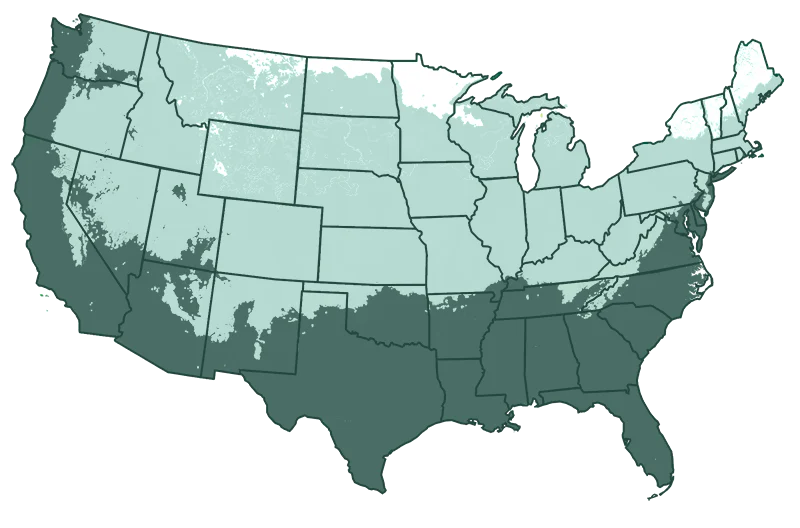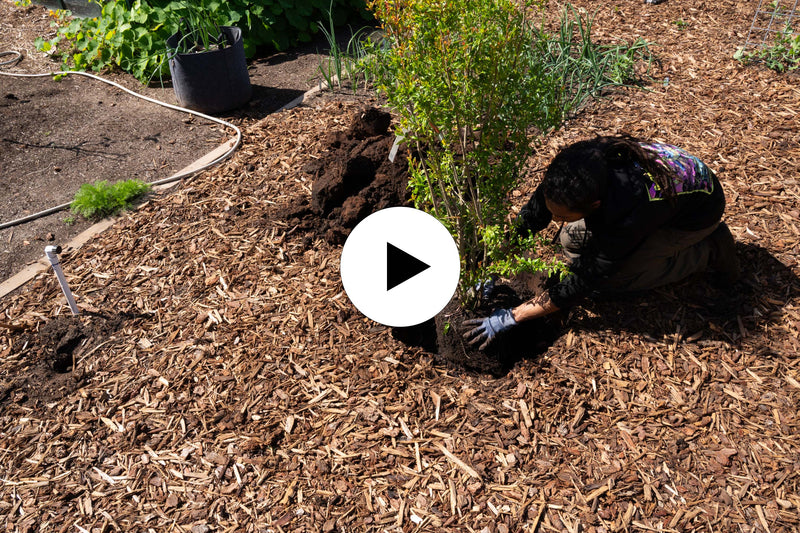


Texas Pink Pomegranate Tree
View More Planting Info
Plant ‘Texas Pink’ in full sun in well-draining soil. Dig a hole twice the width and depth of the root ball and add a load of compost into the dug-out soil. Place half the enriched soil back into the hole and plant the tree. Tease the roots open and fill in around with soil. Tamp down to remove air pockets until the plant is set at the same level as it comes in the bag. Water well in and add a layer of mulch, leaving a space of at least 4 inches away from the main stem.
Sunlight:
Give your new pomegranate tree at least 6-8 hours of sunlight daily.
Harvesting:
Harvest pomegranates when they are fully colored and make a metallic sound when tapped.
Watering:
Pomegranates are drought-tolerant once established and are often seen growing in arid conditions, but water regularly for better fruit production.
- Product Info
- Care and Maintenance
- Planting Care
- Growing Zone
Product Info
Mature Height: 8-15 ft.
Mature Width: 10-15 ft.
Sunlight: Full Sun
Growth Rate: Fast
Does Not Ship To: AZ, OR
Care and Maintenance
Watering: ‘Texas Pink’ is drought-resistant but does better in moist soils where it will produce more fruit. Water once a week and more in hot weather. Test the soil; if it's dry to about 3 inches, it will need watering. As the tree matures, it requires less supplementary water.
Fertilizing: Feed ‘Texas Pink’ in the second year with a balanced fertilizer in spring before the new growth forms.
Pruning: Prune in winter to shape the tree, keep it compact, and remove low-growing branches. Remove any diseased, damaged, or crossed branches, making sure to do this only after the threat of frost has passed.
Pests and Diseases: Use pest management guidelines to manage pests like aphids and fruit flies, and diseases like Alternaria fruit rot and molds.
Pollination: The ‘Texas Pink’ variety is self-pollinating, so one tree is enough, although more than one tree will produce more fruit that will be larger. Encourage bees and butterflies by planting flowering annuals nearby.
Harvesting: When the fruits have formed and are fully colored on the tree, they can be harvested. Cut the fruits off the plant at the stem with a sharp pair of pruners. Use the fruit to eat fresh, juicing, and add to savory dishes for a little fruity sweetness.
Recovery Time: Transitioning from our nursery to your home can be a bit of a shock to your plant. A short acclimation period helps it recover and reduces stress.
Climate Adjustment: Every environment is unique. Giving your plant time to adjust to the local climate, humidity, and light conditions in a shady spot will set it up for better growth and health.
How to Acclimate Your Plant: Keep the plant in its container and place it in a shady, sheltered area away from high winds. Ensure it's watered adequately – the soil should be moist but not waterlogged. Monitor the plant for any signs of distress and allow it to adjust for a few days before planting. After a few days of acclimation, your plant will be better prepared to thrive in its new home for years to come.
Planting Care
Sunlight: Give your new pomegranate tree at least 6-8 hours of sunlight daily.
Watering: Pomegranates are drought-tolerant once established and are often seen growing in arid conditions, but water regularly for better fruit production.
Harvesting: Harvest pomegranates when they are fully colored and make a metallic sound when tapped.
Growing Zone
Growing Zone 7-11, Patio 4-11

Fruit Trees & Bushes Delivered to Your Doorstep
Unpack, Plant and Grow!





